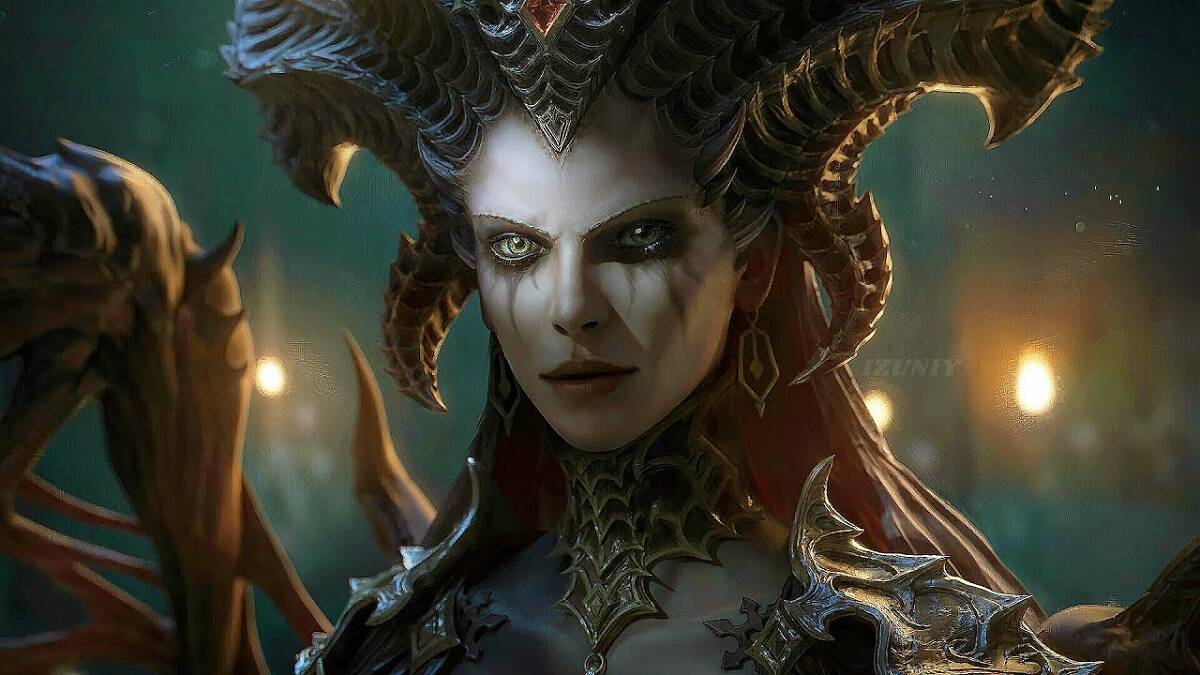Categories
Tags
-
#Buy Lost Ark Gold
#Cheap Lost Ark Gold
#wotlk classic gold shopping
#genshin impact accounts
#buy genshin impact accounts
#genshin impact accounts for sale
#d2 resurrected runes
#buy d2 resurrected runes
#wotlk classic gold store
#cheap genshin impact accounts
#genshin impact buy accounts
#lost ark boosting
#elden ring items for sale
#elden ring runes
#elden ring items
#buy elden ring items
#cheap elden ring runes
#buy elden ring runes
#cheap elden ring items
#d4 gold
#d4 boosting
#diablo 4 gold
#diablo 4 buy items
Archives
Blogs » Business » Diablo 4 is eager to not be Diablo 3, but too timid to maneuver
Diablo 4 is eager to not be Diablo 3, but too timid to maneuver
-
Without any true innovation in the action-RPG formula, the long-awaited sequel is simply a monument to fear and live service bloat.
Blizzard was previously a studio that defined genres. With Starcraft, it elevated the bar for the competitive RTS. With World of Warcraft, it made the MMO mainstream. And with Diablo, it reimagined what an RPG might be. I don't use whatever of that Blizzard in Diablo 4 items. The long-awaited sequel is not only iterative, but it's also timid.
When I asserted the Diablo 4 beta helped me feel like Blizzard hasn't learned anything about action-RPG combat within the 11 years since Diablo 3, some within the comments explained I was judging the sport too early. But the greater I play from the full release, the greater things I observe that confirm that feeling. Diablo 4 is eager to not be Diablo 3, but it is so reluctant to do anything new it can't move forward away from it either.
When Diablo 3 arrived on the scene, it designed a lot of big changes to the formula. The combat was bigger, faster, and flashier; the art style was lighter and much more colorful, having a more mythic narrative to complement; the classes were different; character-building was streamlined, and if you don't know to alter a particular option, filled with awkward hand-holding; and, most controversially of, it was built with a real-money auction house enabling you to buy and sell in-game items. While the sport was successful and largely well-received, and improved substantially over its lifetime because of regular updates (including one which ditched that auction house), a large number of its choices rankled having a vocal portion from the community. To this day, many fans online make reference to it with derision—a go-to illustration of a disastrous sequel.
Many of Diablo 4's design decisions appear in direct conversation with this part from the fanbase—or in anxiety about them. 2023's Sanctuary is much more dark, hopeless, and horrific than computers have you been before, a desaturated, muddy realm of miserable peasants and death. As if to express, "You can't refer to this as one Diablo: Rainbow Edition, eh?". Similarly, the combat is slower and much more restrained, much of this hand-holding around character-building continues to be removed, and also the classes are all Diablo classics. On the face of it, they're sensible changes—but they're made purely responding to Diablo 3, not from any progressive vision for that genre. Either unable or afraid to innovate within the action-RPG space, the sport can only be considered a remix of its predecessor.
Without any new ideas, the slower combat does just seem like Diablo 3's fights dialed down several notches. Without a confident sense of the setting's identity, much of the grimdark world just feels as though a miserable filter over places we've recently been, randomly populated with enemies we've already fought millions of times. Character building does not have training wheels, however, the underlying skill system underneath is not any more flexible than Diablo 3's, it simply asks you to work a little harder to locate its pre-assembled correct combinations. And while the classes powerfully evoke the classics they're according to, there is nothing about them that experiments or provides new methods to play an action RPG—if you've ever played a magic user within an action RPG, you've literally Sorcerer, and frankly it ought to be classed like a human rights violation to really make it this boring to turn into a bear.
World-weary
When you stop and look at what in Diablo 4 is genuinely new, the reply is a grab-bag of games industry buzzwords. It's an open world! It's an MMO! It’s live service! None of them is substance—it's pure bloat.
The massive open world only makes making your way around slow and dull, and it is biomes feel bland and overstretched—some from the more explicitly horrific, Giger-esque dungeons showcase a visual flair and creativity that perhaps could’ve been present throughout the sport if it didn’t have to operate at this type of scale.
Meanwhile, seeing other players playing around adds precious little apart from jank—why, inside a game, many people play single-player, will we have lag, no pausing, and enemies that respawn by popping into existence in front of the face? Limp world events that most of the time you get doing alone anyway, and world bosses that to date have been a joyless slog, aren’t a lot of a trade-off for all those annoyances.
Ultimately, each one of these new elements exists primarily to help keep as many players around the treadmill as you possibly can for as long as you possibly can, using the upcoming season passes to encourage a never-ending churn of recent characters for a long time. Long-term support could be great, however, it can also be very cynical, and I really think the live service hooks here ought to be viewed with suspicion—while the real-money auction house might be gone, the sport's certainly keen to help keep you coming back to its obnoxiously stuffed microtransaction shop.
Once you place these elements aside, there's really hardly any about the core connection with buy Diablo 4 gold that's much not the same as what action RPGs were doing about ten years ago or even earlier. There are not any lessons learned from the other developers have done within the genre—its only influence is its very own predecessors, primarily Diablo 3, the main one it doesn't desire to be, coupled with people's hazy, nostalgic memories from the first two.
Torchlight 2 had more new ideas than this in 2012, using its off-the-wall classes, clever pet mechanics, and momentum system to produce a natural rhythm to gameplay. Path of Exile has had character-building to all-new amounts of depth—whether that's exciting or intimidating depends on the kind of action RPG fan you're, however, you can't deny it has been pushing the boundaries. Hell, even 2015's largely forgotten Victor Vran had its experimental weapons-as-classes system that felt just like a step in a fresh direction.
The irony is the fact that in being so frightened of taking any big swings, because of the failures of Diablo 3, Diablo 4 just ended up being an also-ran of their predecessor ten years too late. It's not a dreadful game, but it is a very dry and unambitious one, relying on the sheer weight of its AAA production values and historic name to create a space within the genre Blizzard long-neglected. Maybe it's an activity that I must have accepted the developer isn't what it really once was, but it is still sad to determine the reigning monarch of action RPGs slumped so lifeless on the throne.


